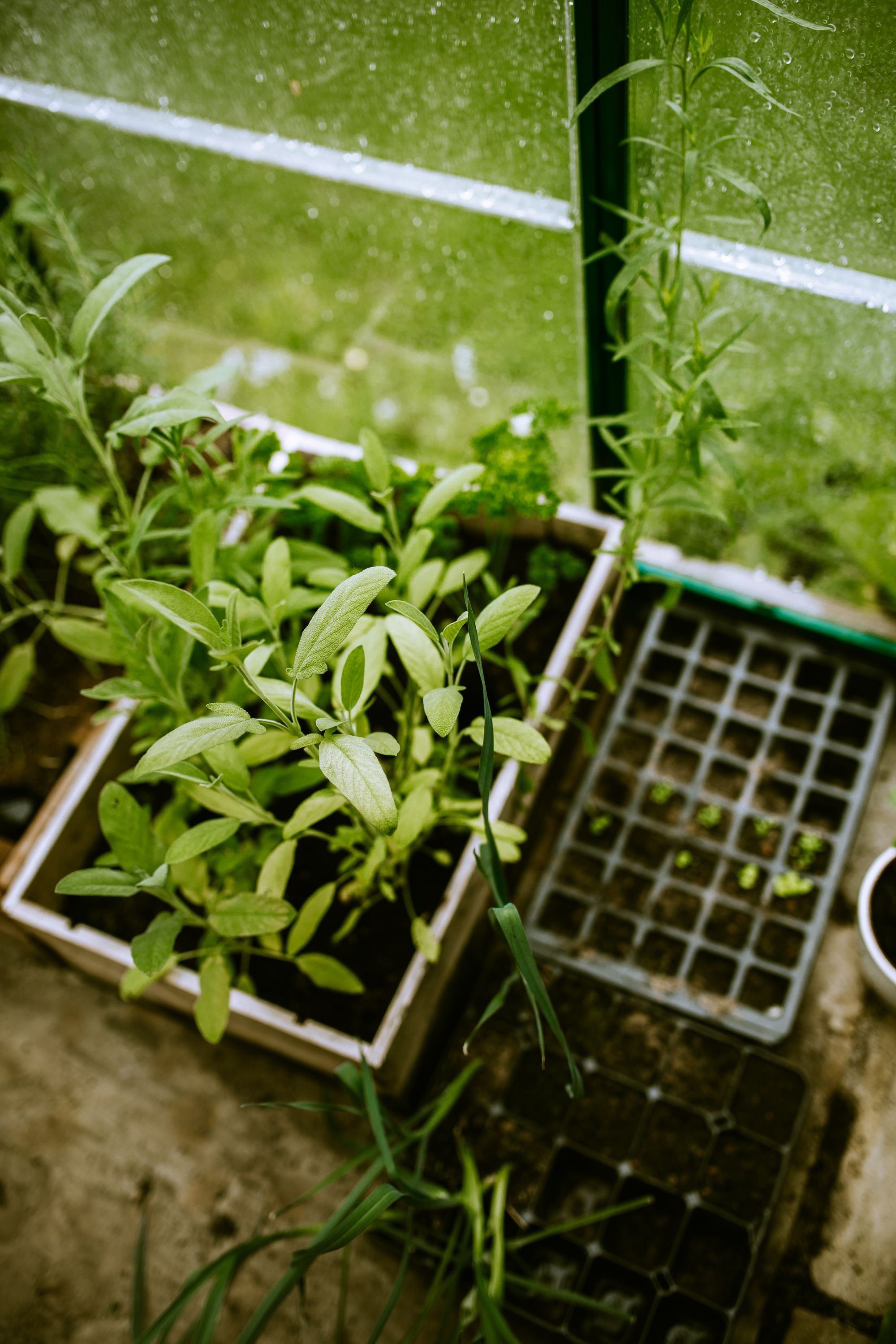What if we told you that a greenhouse can take your veggie garden to the next level?
If you see yourself as a bit of a gardener who wants a place to optimally grow vegetables and plants all year long, they’re a superb option.
In this article, we are going to take a look at what a greenhouse is and does exactly, why you should consider getting one, and what are the best veggies to grow in a greenhouse.
What is a greenhouse?
A greenhouse is a structure that houses vegetables and plants, allowing them to flourish in an optimized environment.
It’s largely made out of glass (and sometimes plastic), and it absorbs the sun’s glowing rays to warm itself up so that it can heat the soil and plants.
Once the sun sets and night takes over, the heat dies down.
Typically, greenhouses are put to work towards the end of winter, a time of year when the temperatures are too low to grow plants outside. As the temperatures rise and we enter spring, the plants can then be moved outdoors.

Great! So what are the benefits of a greenhouse?
You get to grow plants all year round
While you don’t necessarily need a greenhouse to grow plants all year round, it definitely helps.
This is simply because a greenhouse — as we’ve just seen above — lets you grow plants longer, starting at the tail end of winter. You can also extend your harvest time with a greenhouse.
Moreover, there are certain plants and vegetables that need the extra layer of protection so that they can truly blossom and flourish.
Look at it like this: while it’s easy to peer out at gorgeous green and yellow meadows and assume plants and vegetables can flourish out there without any need for a greenhouse, many plants and veggies are not only vulnerable to inclement conditions but also to predators like rodents and birds.
You could actually make some extra cash
Few of us would surely say “no” to the opportunity to make a bit of extra income via our greenhouse.
How can a greenhouse help you raise some extra funds?
Essentially, because a greenhouse allows your vegetables and plants the opportunity to truly flourish, it also creates abundance. This means more produce. It even means excess produce. And when you’ve got that excess produce, you could easily sell it on at a farmer’s market, or even set up a market stall of your own.
You can grow something different!
One of the problems with gardening in colder climates like the UK is that it’s very difficult to grow certain plants because they require certain conditions.
But when you’ve got a greenhouse, you can pretty much grow whatever you want because the conditions will be just right.
Wanna grow a colorful tropical plant? You can do it in a greenhouse!
They look great
Greenhouses sure are functional — but they can also be an aesthetically pleasing structure that perfectly complements your already gorgeous garden.
Thanks to the fact that there are so many different styles and even colors these days, gardeners now have the chance more than ever to invest in a greenhouse that really makes a statement, and which doesn’t stick out like a sore thumb. Instead of just being something that performs a function, greenhouses are actually kind of stylish these days.
Indeed, it’s precisely because they look so fetching that greenhouses are no longer just the investment of commercial growers.
Are there different types of greenhouses?
If you’ve ever visited gardens of friends, family, or neighbors over the years, you’ve surely seen at least two or three greenhouses.
But not only do they come in different sizes; some greenhouses perform different functions to others.
There are three main types of greenhouses:
- Detached greenhouses. A detached greenhouse stands apart from other greenhouses, but you can connect it to a work area. The biggest benefit of this type of greenhouse is that it can be any shape, and you can orient it east or west. On the flip side, detached greenhouses experience more heat loss than attached ones.
- Lean-to greenhouses. Lean-to greenhouses go back to Victorian times, and they’re fantastic for absorbing heat before releasing it when the sun sets. However, you need to carefully take into consideration the size of a lean-to greenhouse before buying one because the last thing you want is for it to clash with a window!
- Gutter-connected greenhouses. Lastly, gutter-connected greenhouses are popular because they’re cost-effective, they take up less room and they don’t require as much heating when compared to detached greenhouses. They’re also more energy-efficient.
As mentioned, each type performs differently, and the productivity, performance and efficiency of a greenhouse is largely determined by how it’s designed.
What if I’ve got a balcony?
The good news is that if you’ve got a balcony instead of a garden, you can still have a greenhouse!
What type of greenhouse?
A mini one, of course!
Yup, mini greenhouses are a thing, and they’re pretty cool. They’re practical, affordable, and you can even make them yourself. They also look great and offer your plants the protection they need from the elements.
Be sure to check out our guides to balcony gardening: Balcony Garden Checklist and 5 Easy-to-Grow Vegetables for Your Balcony Garden

Best veggies to grow in a greenhouse
The best veggies to grow in greenhouses are those that grow better in hotter climates. Such as:
- Peppers. Ever wonder why some peppers are red? It’s because they caught the sun! Peppers need super hot weather (we’re talking baking) in order to thrive, which is why you simply won’t be able to grow them in cooler climate very well without a greenhouse.
- Tomatoes. Tomatoes flourish in the great outdoors but by growing them in a greenhouse, you get to nurture them for longer. This will yield a better harvest.
- Cucumbers. The thing with cucumbers is that there are so many varieties, so it’s wise to choose carefully!
- Root veggies. Root veggies like carrots do thrive in the outdoors, but by growing them in a greenhouse you basically get more juice out of them, and can even keep growing them well into autumn.
- Sweetcorn. Grow sweetcorn in a greenhouse and you can pretty much eat it straight off the stalk. Delicious!
- Broccoli. Broccoli is super simple to grow and can be harvested in the summer and autumn.
- Lettuce. Lettuce grows fast and is very healthy. Plus, when grown in your greenhouse, it can be harvested all year.
Wrapping up
We won’t lie — greenhouses aren’t what you’d call cheap. But they are a fantastic addition to any garden if you want to grow a variety of plants all year round, and even become a bit more self-sufficient. Total cost, meanwhile, really comes down to the size of the greenhouse, and your wants and needs.
If you think investing in a greenhouse is the right move for you, the next step is to start shopping around for one. However, it’s also important to make sure you don’t need planning permission first.
Other than that, we wish you good luck and happy gardening!


